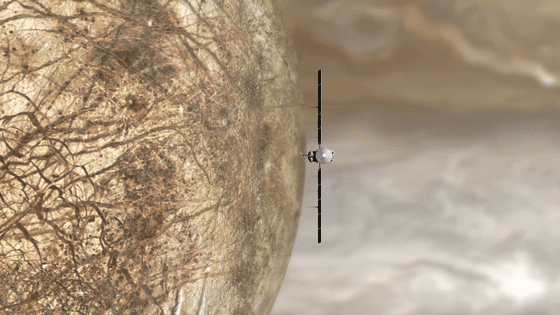NASA's Europa probe passes final tests, set to launch on October 10, 2024

Jupiter's moon 'Europa' is believed to have a liquid ocean beneath the ice, and is one of the celestial bodies most expected to have extraterrestrial life. It has been announced that
NASA's Europa Clipper Continues Path to Launch – NASA's Europa Clipper Mission
https://blogs.nasa.gov/europaclipper/2024/09/09/nasas-europa-clipper-continues-path-to-launch/
NASA's Europa Clipper probe to icy Jupiter moon takes big step toward its Oct. 10 launch | Space
https://www.space.com/nasa-europa-clipper-jupiter-probe-closer-to-october-2024-launch
On September 10, 2024, NASA's official Europa Clipper program X (formerly Twitter) account announced, 'Today, our mission reached a milestone in NASA's standard planning known as Key Decision Point E (KDP-E),' which has approved us to move forward with the launch window that begins on Thursday, October 10.
That's a go: Today our mission passed a standard planning milestone known as Key Decision Point E. We're now approved to proceed toward a launch period that opens Thursday, Oct. 10. https://t.co/P0GBjZIrnW pic.twitter.com/zCdd4aM2zJ
— NASA Europa Clipper (@EuropaClipper) September 9, 2024
KDP-E is the decision point that initiates 'Phase E,' the actual operation of the project, in NASA's project life cycle , which ranges from 'Phase A,' which involves concept development and technology development, to 'Phase F,' which involves completing the mission.
With the completion of KDP-E, the Europa Clipper mission, which began in earnest in 2015 and is scheduled for completion in June 2022, will now move into final preparations for launch.
It was reportedly discovered in May 2024 that the transistors that control the flow of electricity in the Europa Clipper were failing at lower levels of radiation than previously thought. This is a major issue because, due to the influence of Jupiter's magnetic field, Europa is exposed to enough radiation that it can be seen glowing even in the dark, where the sun does not reach.
But after about four months of nonstop testing and analysis, the team determined that the probe's transistors would last for a four-year mission.
Instead of orbiting Jupiter, the mission plan calls for Europa Clipper to perform about 50 gravitational flybys, taking it on and off from Europa, which will limit the spacecraft's time in radiation hotspots to just a short time, giving the transistors enough time to recover while they're out of the danger zone.

by NASA/JPL-Caltech
'We have concluded that while Europa Clipper will be exposed to a radiation environment as it orbits Jupiter, the flyby will bring it out of that environment long enough for the transistors to be repaired and partially recovered,' Jordan Evans, Europa Clipper project manager, said in a September 10 briefing.
The Europa Clipper, which will be launched on October 10, 2024 by SpaceX's Falcon Heavy rocket, is scheduled to arrive in the Jupiter system in 2030 and explore the icy surface and ocean beneath it. Its main goal is to determine whether Europa is habitable.
'This is an ambitious mission,' said Kurt Niebuhr, Europa Clipper mission scientist. 'We have the opportunity to explore not just a world that may have been habitable billions of years ago, but a world that may be habitable right now.'
Related Posts:
in Science, Posted by log1l_ks







